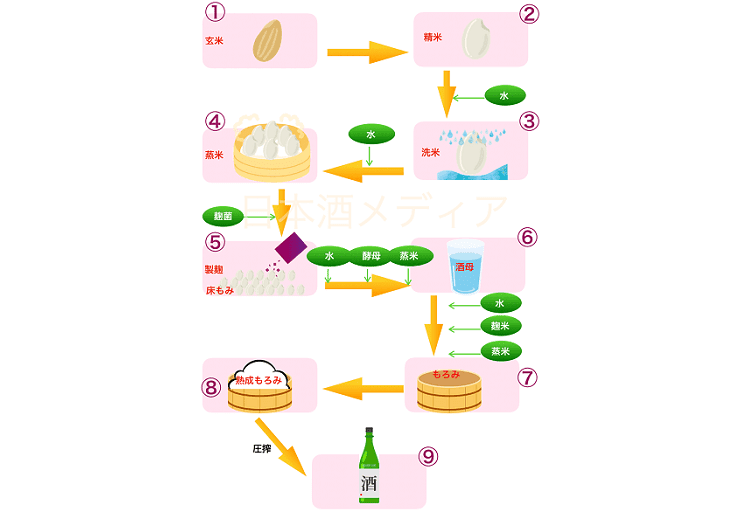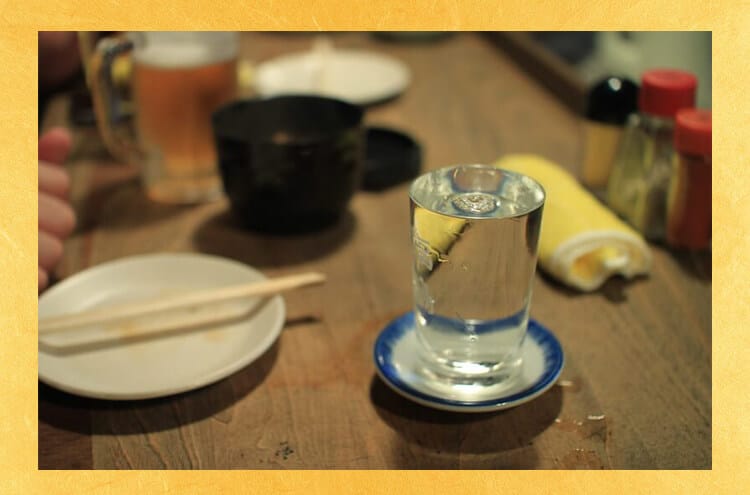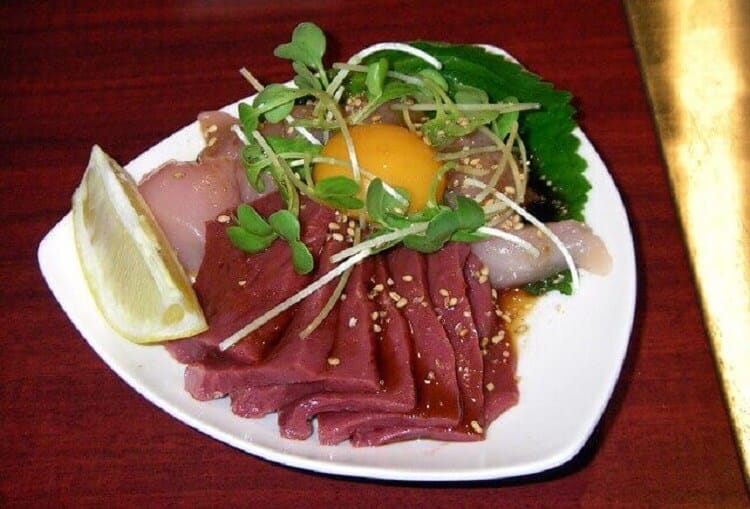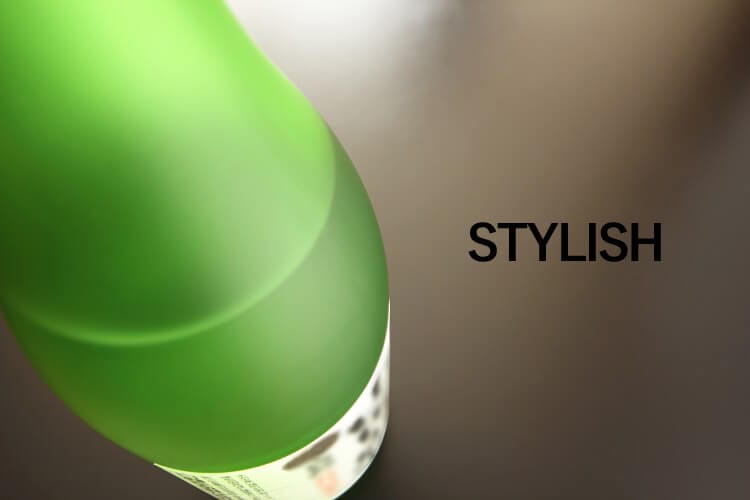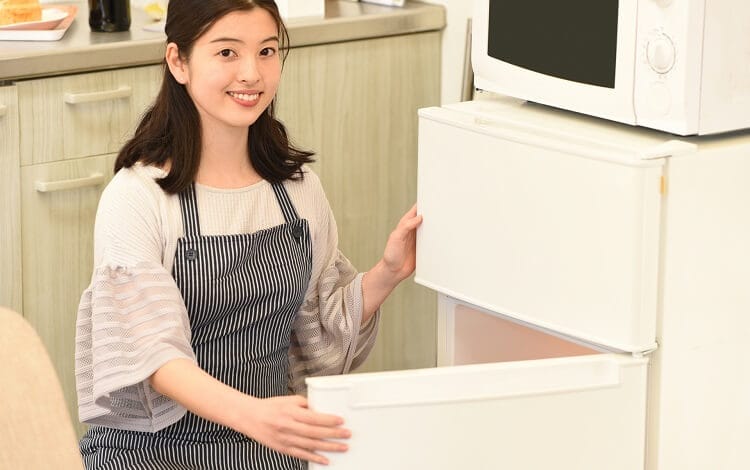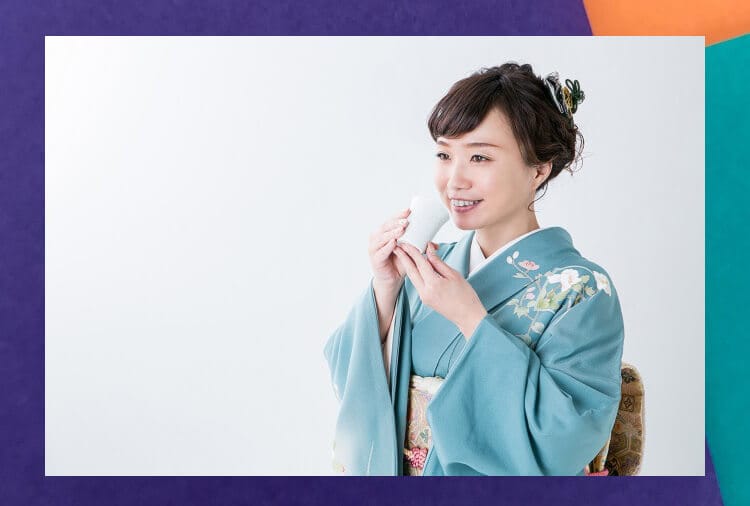
In this 10 year, the common sense of sake has evolved greatly.
The appearance of sake that once had to be looked at, touched, smelled, and determined by experience and craftsmanship can now be quantified with machines.
Sake, which has become a common sense that “the more you polish it, the better it ’s polished,” is suitable for sake brewing, such as Yamada Nishiki. Sake brewing with new common sense to complete sake has also appeared. Even overseas, we have won even awards.
In common sense, it has been said that in sake brewing, water acts as a taste of sake, but sake using tap water has won an honors award at the Tokyo National Tax Bureau Liquor Review Committee. Sake that was not thought of in common sense is now being made.
This time,
- Is the “common sense” that sake becomes delicious the more you polish the rice, is it true?
- Is it common sense to know the meaning of “high / low” rice milling ratio?
- If natural water is used, sake will be delicious.
I will explain.
Is it true that the common sense of sake is that the more polished the rice, the better the sake becomes?
Rice polishing rate
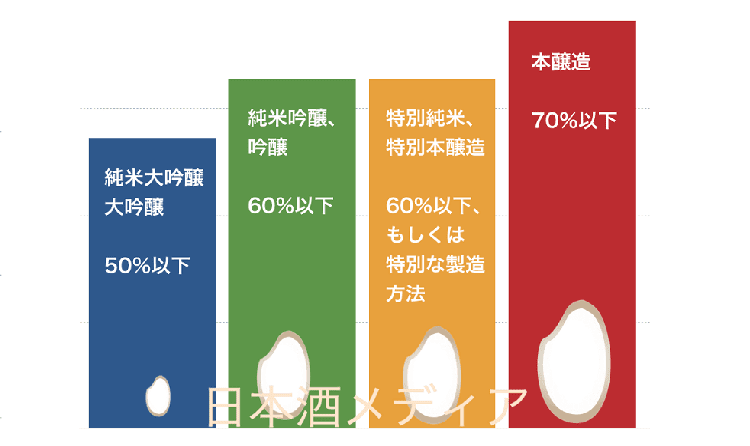
Useful rice milling ratio to know when choosing sake.
Milling rate is the ratio of the weight of white rice after milling to the original brown rice weightHowever, the person who can understand “I see!” In this explanation can be seen as a good sake connoisseur.
However, there are people like me who can't understand. For those of you, another explanation may be easier to understand. that is,
Polished rice, which is important in making sake, is also expressed by the word “polish”.
It ’s a little confusing,
- “Rice milling rate 50%” means sake made with half polished brown rice
- “Rice milling rate 60%” means sake made from polished rice with 40% polished rice
- “Rice milling rate 70%” means sake made from polished rice with 30% polished rice
Please understand.
In the graph showing the above rice polishing rate,Pure rice Daiginjo and Daiginjo have the most amount of shaved rice, so the rice grains are much smaller, This brew has less than 70% of rice grains because the amount of shaved rice is smallThis is an image of that.
Do you know the meaning of the common sense of sake, “Rice milling ratio is high / low”?
Now here is the question.
Commonly usedCommon sense of "high and low rice polishing ratio"But do you really know what kind of liquor it represents?
Many people say that the lower the rice milling rate, the more delicious it is, but they prefer liquor with a higher rice polishing rate.
Source:Delicious
- High rice polishing rate▶Book brewing, etc.Represents delicious sake
- Low rice polishing rate▶Ginjo and DaiginjoRepresents fine Japanese sake. Generally called expensive, fragrant and delicious.
(* Author summary)
If there is a site that expresses,
Generally speaking, it is said that the higher the percentage of polished rice, that is, the more polished it is, the more gorgeous and fragrant sake will be.
On the other hand, sake with a low percentage of polished rice has a gorgeous scent and a modest rice scent.Source:SAWANOTSURU
- High rice polishing rate▶Recognizing that they are more polished,Gorgeous fragranceExpressed as “high sake”▶(Ginjo and Daiginjo(Represents fine sake)
- Low rice polishing rate▶"The gorgeous fragrance is suppressed,Modest rice scent`` Finished ''▶(Book brewing, etc.(Represents delicious sake)
(* The author's summary, the parentheses are the author's additions)
Some sites have written the opposite, and the information is complicated (exaggerated).
For example, "Samurai Festival Shine 2 Discount 3 minutes"When"Nanamoto Pass(See below)
- Milling rate 2 percent 3 minutesThe “Samurai Festival”Eliminates 77% of rice as wasteThen,Reduced to 23% compared to the original rice
- Rice polishing rate 77%"Nanamoto Ferry"Eliminates 23% of rice as wasteThen,Reduced to 77% compared to the original rice
The question of which figure should be used to express “high” or “low” was answered on the Japan Brewing Association website.
Japan Brewing AssociationOn the site
When used as a ginjo brewer, the rice polishing rate is low.Considering the point of yeast growth due to nutritional deficiencies in the early days of cocoon…
Source:Japan Brewing Association "Pure Culture Association Yeast"
The Japan Brewing Association is an association established by the Meiji government for the modernization of the brewing industry.Is also doing.
in addition,Liquor Research InstituteThe following description can be seen on the site.
Rice milling ratio is low (rice milling ratio is small)Because rice is easy to break ...
Source:Liquor Research Institute Information Magazine "Sake Story / Sake 2"
The predecessor of the Liquor Research Institute is the National Brewing Laboratory. It is also established by the Meiji government and conducts advanced analysis and appraisal of alcoholic beverages, quality evaluation of alcoholic beverages, and research and surveys related to alcoholic beverages and liquor industry.
With that,Expressed as "high, low" according to the size of the rice polishing rateDispatched to the “Umasake” site!
But to be honest, the expression of the rice milling rate is confusing.
Humanity usually thinks that value is high when it is said that “the ratio of polished rice is high”. In order to avoid misunderstandings, it would be better to use words that can be imagined visually, such as “the number of polished rice is large”.
As an aside, there is a common sense that the smaller the number of polished rice, the higher the quality, so there is also Daiginjo (1% of rice is removed as Nuka), which has been reduced to 99%.
↓
It became a hot topic when the rice cake festival made sake with a rice polishing rate of 23%, but in fact, rice with a rice polishing rate of 1% ...
Why is it common sense to shave plenty of rice in sake brewing?
What is needed for edible rice eaten as rice is the proteins and lipids that cover the outside of the rice. Because these ingredients become umami, we stop rice polishing at around 90% and only remove the germ and bran layer of brown rice.
But,The rice used for sake doesn't need protein or lipid umami. It is because of the following common sense.
- Protein changes into amino acids during the fermentation process of sake brewing▶There is a miscellaneous taste in sake.
- Lipid▶Occurrence of Daiginjo and Ginjo's unique "incense incense and superior incense"
New common sense that sake's personality will be lost in the rice milling competition
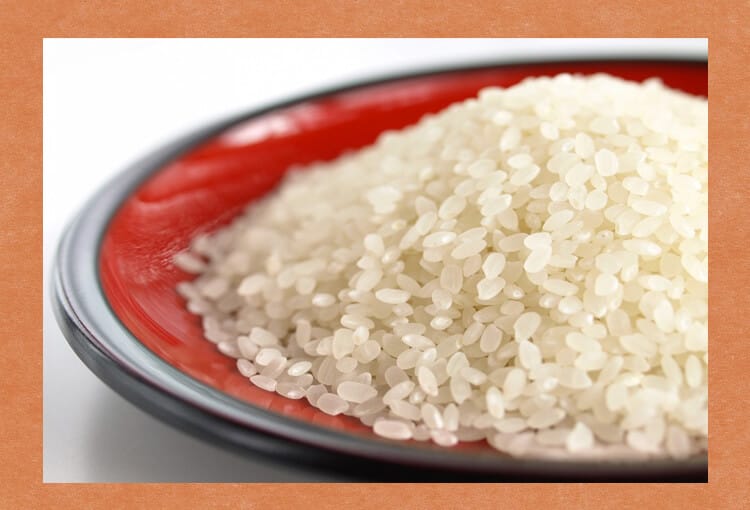
The world-famous Asahi Sake Brewery Festival, but the secret story behind the birth of “Tsubaki Matsuri Shine 20%,” which uses 77% of rice and removes 23% of rice.Rice competition in the sake industryI have a glimpse of consciousness.
The first plan was 25%. I had a business trip after confirming that brown rice had been put into a rice mill and started making rice, and there was a person who told me that a major manufacturer with a cocoon sells 24% polished white rice. I asked the rice miller to think that I would polish 2% on the in-car phone from the Shinkansen that I would return the next day to 23%.
An anecdote unique to Asahi Sake Brewery aiming for high-quality sake brewing,If you polish it too much, it has a deep taste, a similar taste, and a characteristic sake.There is a risk of becoming.
As a general rule, the more polished the rice is, the lighter and more beautiful the finish will be. However, if you polish it too much, it will have the disadvantage of flattening the taste of sake.
Source: CRAVITON "What is sake brewing?'
Sakai Matsuri is internationally referred to as a “named sake” because of its excellent balance control, but unfortunately some of them have a unique rice character by polishing them too much. There are also sakes that are no longer available.
But,There are also sake breweries that abandon the common sense of polishing rice and aim for delicious sake brewingTo do.
Awarded overseas by breaking the common sense of sake! Rice milling rate 77% `` Nanahonen Ferry Junmai '' Tomita Brewery
View this post on Instagram
Prepared with "Shiga Ferry 6" which is said to be a phantom sake rice"Nanamoto" is 77%.
Although it is a rice milling rate that does not meet the standards of this brewing, it is a sake that can be enjoyed from all angles, with complex elements such as richness, umami, sweetness, sourness, astringency and pungent taste intertwined.
In the word of mouth`` It has a strong and heavy taste, but the aftertaste has a good sharpness '', so it does not get tired of itchingIt is also attractive 1.
The sour and umami flavors are part of its characteristics and are delicious. The acidity is quite good. The rice polishing rate is 77%. But I don't feel any strange taste. Rather, it has a heavy taste that is probably uncooked.
At the International Fair, “Pairing with food is perfect!”
View this post on Instagram
It was common sense that sake refined to the Daiginjo class won awards at sake tasting events in Japan and overseas.Low-milled rice liquor “Nanamoto Tsuyoshi Ferry Funai Junmai” won the Great Jury Prize at the Kura Master Award in 2018* 1.
Kura Master is a “Sake Competition in France for French people by French people” held since 2017.
The jury is a French sommelier, restaurant staff, hotel / cooking school staff, etc., but it is a French competition, but there is no common sense or preconception that sake should be like this, and a fair examination by blind tastingIs done.
If you know the common sense of sake in advance, it may become `` invisible because you know it '', but the sake selected by their five senses in a clean state has the quality and taste that should be highly appreciated I'm waiting.
View this post on Instagram
The essence of the rice polishing competition is “to make sake with a refreshing taste that can be tasted with sake alone”.
However, more recently than sake aloneAn increasing number of people enjoy pairing with food. for that purpose,Low-milled rice liquor that tastes the individuality of rice and emphasizes umami rather than aromaIs perfect!
Especially in France, emphasis is placed on the compatibility of food and alcoholIt is speculated that the award was given because it was “Nanamoto Tsuyoshi Ferry Junmai”, which has a “taste that goes well with the rich sauce of French cuisine”.
This time, with the award of the rice milling rate 77% "Nanamoto Tsuyoshi Ferry Junmai"The breadth and diversity of sake that does not rely on polishingMay be recognized as new common sense.
“New common sense of Japanese sake”
View this post on Instagram
“The more you polish the rice, the less it tastes and the refreshing taste” is a common sense sake. When we choose sake, we look at the label
⬇︎
Rice milling rate is smallMake sure
⬇︎
The surface of the rice is shaved wellRecognized
⬇︎
... means thatSake with a refreshing taste and no miscellaneous tastewhat!
We understand and purchase.
New common sense that sake is the key to low temperature fermentation
Next, consider why rice needs to be polished.
That is,
It is written as if it was pressed in any size.
However, there are some sake breweries that have a different idea from common sense.
| If you reduce the amount of brown rice,Nutrients such as protein and lipidMany remain |
| ⬇︎ |
| Because of its nutrientsYeast gains strength and is activebecome |
| ⬇︎ |
| Made of rice starchEat sugar at a stretch |
| ⬇︎ |
| Miscellaneous taste |
The cause of the miscellaneous taste of sake was analyzed in Fukushima Prefecture as described above."Do not cut rice"Selected Sake Brewery.
View this post on Instagram
Sakai Shuzo also captures the causes of miscellaneous taste in sake as follows.
- Usually 25 daysEven though brewing should take place for a long time
- Due to yeast that has accelerated its activities,Sake can be made in half the daysMay not be
Of course, the taste of this fast-curing sake is not perfect for flattery.
New common sense that clear sake is realized with moromi of low temperature fermentation
Sake brewing process
Created by the author based on the National Tax Agency “Sake Bookmark”
* Click to enlarge
thereKeep 12 ℃, which is the normal fermentation temperature of moromi, for 2 time. After that, the strategy of rapidly lowering to 9 ℃(Sake brewing process ⑦).
After that, while believing in the power of rice,Lower the temperature to 6 ℃ while listening to the voice of the yeast, etc.Let the yeast work longer (Sake-making process).
Then,Whether it ’s polished to 86% or even edible rice, it ’s a clear sake.Has succeeded in creating.
Moreover, the rice used is not sake rice,Mizuho Kogane, an edible rice from the local Aizu Sakashita Town.
↓
To make sake, it is safer to use rice suitable for sake brewing, but in fact, sake brewing to make sake with edible rice such as Koshihikari has also appeared ...
`` Tenmei Mizuho Golden 86 '' proves that miscellaneous taste is not determined by polishing rice, but by how to make itThe new common sense is as follows.
- Do not use “Sake Brewery Suitable Rice”, which is a teppan for making high-quality sake
- Rice milling rate is almost the same as edible rice 86%
- Slowly ferment moromi at low temperatureTo extend the working hours of the yeast
- Was bornTransparency and elegant taste have the concept of “enjoy with meals”
- The individuality of riceJapanese sake
By the way, it is edible rice usedMizuho GoldenIt is,
- A plant that has been nurtured in a way that has not lost its cold damage in Heisei 5 and that has been nurturing faster than normal rice.
- Registered as a new variety in Heisei 17 as "super-fast rice"
And rice with quite a story.
This is even a premonition that there will be a premium in the future!
↓
Introducing the overseas circumstances that capture sake with premium as an asset, and the sake of 1 book 60 million yen…
Research also boosts “unpolished rice sake”
There was a paper that encouraged the idea of Sake Brewery, even though I thought that a sake that had been polished by Ichizo Brewery and a little polished rice was completed.
That is,
In rice bran with a rice polishing ratio of 90%, the amount of nitrogen eluted from the raw material is large, but since the amount of nitrogen taken up by yeast is very large, the amount of nitrogen in the liquid phase, which is the difference, has been clarified.
That's it.
Nitrogen (contained in amino acids and proteins) in rice as a raw material in sake is related to the aging of sake.It is also said* 2. To that end, each brewer is polishing the rice.
The beginning of this studyDespite high protein content in rice with a high rice polishing ratio, amino acid content decreasesThis is to investigate the cause.
The researchers conclude that:
- Due to the production of ethanol by yeast, the dissolution of protein in moromi was kept low.
- The amino acid content of moromi falls even when it is charged with rice with a high rice polishing ratio.
- The reason is that the number of yeasts in rice with a high rice polishing ratio is significantly high.
- Nitrogen has the highest rate of uptake by yeast in the mash of rice milling rate 90%, resulting in less nitrogen remaining in the liquid phase
Although it was a sake made with Ichizo's experience and conviction based on experience, it was actually well supported.
The taste of sake made by breaking common sense is
It is a non-filtered one-time sake. The label is charming. I feel that even though the words are few, I'm talking to my tongue. The refined scent of refreshing and sweet acid and the mellow sweetness and throat over there are impressive.
Source:eating log
Another thing that changed the common sense of the rice polishing ratio of sake was innovation in hardware.
"Meeting new common sense of sake" Mechanized rice can take a miscellaneous taste
Washed rice is the “milled rice of 2”It is said that it is an important process in sake brewing (Sake brewing process ③).
It seems that most people think that they simply “wash rice”, but actually it is a little different in sake making.
That is, Washing time is also an important point because not only the lipids and proteins remaining on the surface of the rice are thoroughly removed by washing with water, but also the water used for washing the rice is absorbed and affects the finish of sake.It is.
- Beyond the water absorption rate of rice, it becomes soft steamed rice, and the mycelium of the cocoon spreads only on the surface of the rice
- If there is not enough water supply, it will be steamed and the core will remain in the steamed rice
Therefore, it must be done with great care, such as measuring the time with a stopwatch. This technology"Limited water supply" trickBut nowHigh performance rice washing machine with improved rice washing technologyAppeared.
View this post on Instagram
If you use this rice washerWash quickly with bubbly water and take only 1 minutes. There are few cracked rice and Nuka is completely removed.You.
After that, the rice is soaked, and when finished, the dehydrator sucks and dehydrates.Equal water absorption rate for riceBecome* 3.
View this post on Instagram
Washing rice perfectly with less water■Important points for making good steamed rice. Steamed rice with good salmon will go smoothly in the next stage, which is the process of attaching seed rice to the rice in the next stage (the process of sake brewing (5) before the rice paddy process).
In addition, some sake brewers comment that the taste of sake made from rice washed with a rice mill is “drinking”. Washing rice with machinery is now becoming common sense.
It is now necessary to use the Woodson bubble washing machine rather than manually, and to make sure to adjust the moisture with a dehydrator.
It looks nice to wash your hands, but the washing unevenness and the omission are completely different, and a clearer liquor is born.
Sake can be made even with tap water

The brewery's large brewery is dim, with huge Japanese kettles and “sakabane” for squeezing sake. And the surrounding environment is rich in nature and clear stream. We imagined a brewery that makes sake. This is because common sense is that sake is not only about rice, but also water is important.
HoweverA sake brewery that uses tap water in the middle of Tokyo and brews sake at the 22 floor Machiya-style building on the 4 tsubo site with a narrow frontagethere is. that is“Tokyo Port Brewing” in the center of Tokyo.
Water used in important scenes of sake brewing
Sake (water for brewing) pic.twitter.com/knjBF1WvjG
— Stray Shachi (@ Blancdieu758) January 2, 2019
First of all, let's review the scenes where sake is used for sake.
- Washed rice and soaking: After milling, wash away the nuka on the surface of the rice and put the rice in the water (Sake brewing process ③)
- Steamed rice making: Steam rice with koshiki so that it becomes soft inside and outside (sake brewing process ④)
- Sake mother making: Mix Sake rice, steamed rice, yeast and water to make a sake mother (Sake brewing process ⑥)
- Moromi making: Sake mother, sticky rice, steamed rice, and water (Sake brewing process ⑦)
You can see that water is used in important scenes in sake brewing.
Water quality is divided into soft water and hard water,
- Soft water: Fewer minerals such as calcium and magnesium, fermentation proceeds slowly▶Sake with a soft taste
- Hard water: Fermentation becomes active because there are many minerals such as calcium and magnesium.▶Japanese sake with a firm taste
By the way, the water in Kyoto and Fushimi, which boasts the largest amount of sake produced in the country in the 2, is “Medium hard water (both soft water)”. It is said that good quality sake can be made because it contains moderate amounts of minerals.
“Tokyo Port Brewing” aiming for new common sense of sake
View this post on Instagram
Now, this is a sake made with tap waterThe quality of tap water is medium hard water as in Kyoto Fushimi.
Even with tap water,The quality of tap water in Tokyo has been improved so that it is well known worldwide, so it has high quality and safety.It is said that.
It does not contain iron or manganese, which hinders sake brewing. Although it smells of chlorine peculiar to tap water,Chlorine disappears by the end of 1 months of fermentationdoing.
The sake brewed by Tokyo Port Brewery is said to be a little sweeter than the Fushimi sake with similar water quality. It seems to be very popular with women.
View this post on Instagram
Tokyo Port Brewery stocks a variety of sake while using a mini brewery that uses tap water. Among themJunmai Ginjo Genshu "Edo Kaijo Yamada Nishiki" won the Honorable Prize in the Sake Junmai Sake category at the Tokyo National Tax Bureau Liquor Review Committeedoing.
However, the appeal of Tokyo Port brewing is not limited to sake.
The brewer's ancestor who breaks the common sense of sake is Wakamatsuya
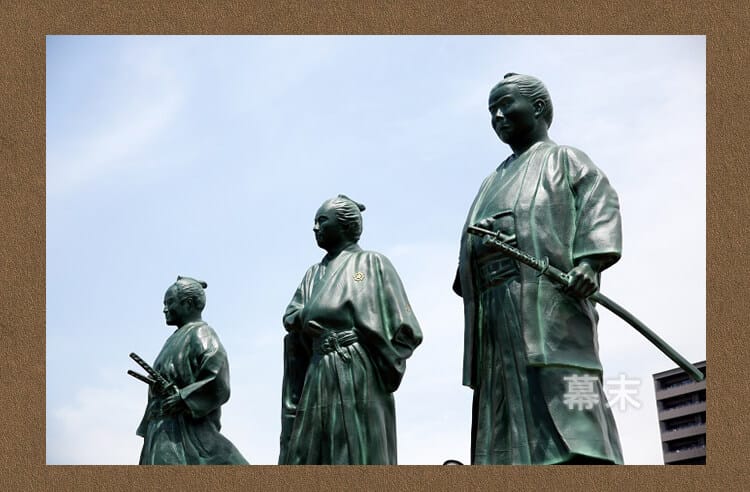
The sake brewery “Wakamatsuya”, which was said to have been visited by Takamori Saigo and Katsu Kaifune, was the predecessor of Tokyo Port Brewing. Oku-zashiki is a place for their secret talks, and there was a talk about “Edo Castle Bloodless Kaijo”.
like thisBeing involved in a historical incident is the name of the brand sake “Edo Kaijo”, and it is also attractive for the story of Sake BreweryThere should be many people feeling.
A new common sense of sake that aims to create a safe sake

The Edo Kaijo seriesBrands using 1901 yeast, which is a "non-urea-producing non-foam yeast"`` Ethyl carbamate is likely to become a problem in overseas exports in the future■As sake that does not occurSake brewing that is safe from international regulationsIs doing.
Tokyo Minato Brewery continues to challenge not only with awards at appraisals and safe sake production, but also with sake-making using self-cultured lactic acid bacteria.
Those who say that such efforts and trials are “Sake using tap water” will be even more captivated.
Summary of “common sense of sake”
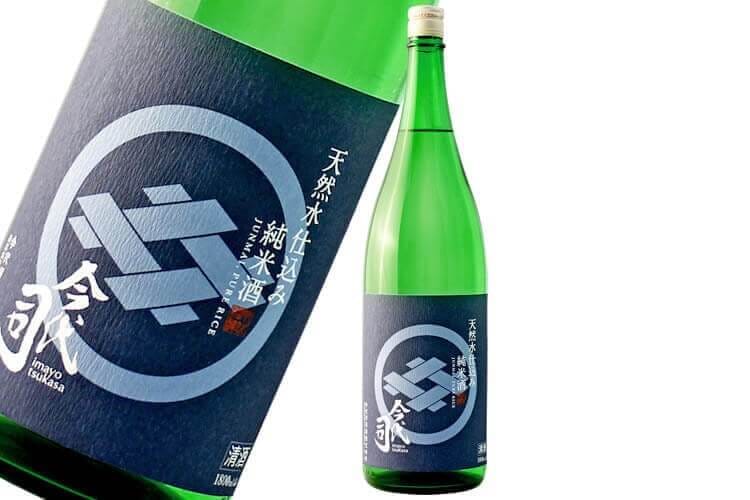
Nowadays, most people have a commitment to everyday water. Also, most people have the common sense that sake should be made from highly polished rice.
There are many people who are drunken by the refreshing drink and ginjo incense and feel happy, and the sake brewed with new common sense may have a sense of incongruity.
For those who want to recommend sake, “Pure Rice Imadai Tsukasa Natural Water Preparation 1800ml”.
The rice polishing rate is 60%. It is not as good as the 86% or 77% sake introduced in this article, but it is pure rice, so the taste of rice is firm.
G9 yeast that is used by Niigata Brewing Experiment Station and can be used only in Niigata Prefecture. The sake brewed from this yeast
- Exquisite fragrance balance
- Good acid removal
- No miscellaneous taste
It has the characteristics.
In addition, since the Los Angeles International Wine Competition has won a gold medal in the sake section, it is recommended that it will satisfy even the passion of fans.
Niigata local sake "Imadai Tsuji" Junmai sake. A fruity flavor comes first for the sake and sake that we drank this time. The mouth feels mellow and the end of drinking is relatively refreshing. I think that it is easy to match with any dish if it is Japanese food.
Source:Instagram
If you want to try sake made by breaking the common sense of sake, but you are a little hesitant, we recommend that you try the `` Pure Rice Imadaji Natural Water Preparation '' brewed by Niigata's pure rice only established sake brewery The
Reference site
1, Kura Master "Announcing the winners of 2018'
2, Masao Okuda "Effects of Nitrogen and Sulfur Compounds in Raw Rice on Aroma Changes after Sake Storage”Japan Science and Technology Agency
3, WoodsonRice brewing machine for sake brewing Rice Clean MJP'
* This article describes the author's own views based on reference information. Please use the information at your own risk and judgment. The author and publisher are not responsible for any direct or indirect damages resulting from this. Please note.

